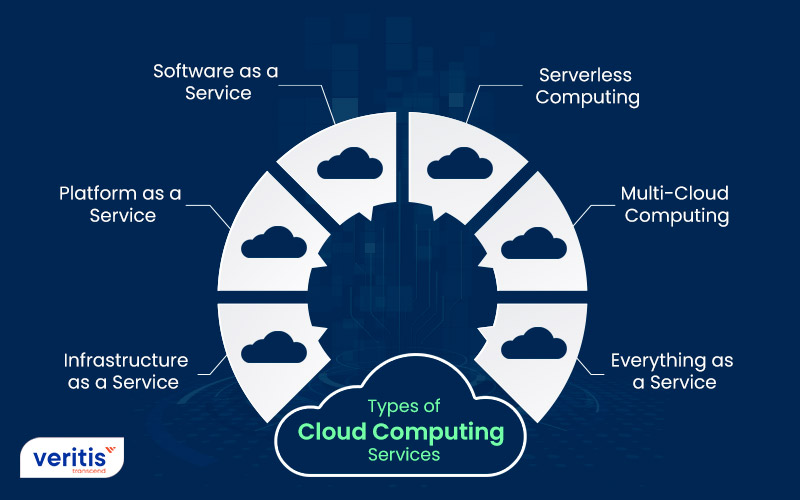Simplify Your Framework With Cloud Solutions
As companies navigate the ever-evolving landscape of modern technology and information administration, the function of cloud services in streamlining facilities has come to be progressively popular. The appeal of streamlined procedures, improved efficiency, and improved source allowance through cloud solutions is obvious. The journey towards a much more cost-efficient and active IT infrastructure includes even more than just migrating to the cloud. It needs a tactical technique and a deep understanding of the nuances of cloud adoption. So, just how can organizations successfully navigate this shift and absolutely unlock the potential of cloud solutions for streamlining their infrastructure?
Benefits of Cloud Provider
Cloud services provide a streamlined method to managing IT infrastructure, giving companies with scalability, cost-efficiency, and versatility. One of the key advantages of cloud services is the scalability they offer.
In addition, cloud solutions eliminate the need for businesses to spend in costly hardware and software program. This cost-efficiency is a substantial benefit, especially for tiny to medium-sized ventures aiming to reduce upfront expenses. By using cloud solutions, services can access top notch IT resources without the large price connected with standard infrastructure setups.
Additionally, cloud services supply businesses with the versatility to access their information and applications from anywhere with an internet link. This level of availability boosts collaboration among groups, enables remote work, and boosts general performance. The flexibility provided by cloud services equips businesses to adapt rapidly to altering market problems and client needs.
Price Financial Savings and Scalability
Along with the functional advantages highlighted earlier, the combination of cloud services into a company's framework generates substantial cost savings and enhanced scalability. Cloud services provide a pay-as-you-go model, allowing organizations to scale resources up or down based on existing demands, thereby avoiding the costs connected with preserving excess ability. This versatility enables companies to adapt swiftly to fluctuating demands without sustaining unnecessary costs.
Additionally, cloud services eliminate the demand for upfront investments in hardware and software, minimizing resources expenses. Operating costs are also decreased as firms no much longer need to manage and keep physical servers, causing lower energy intake and IT staffing expenses. Additionally, cloud solutions supply automatic updates and maintenance, ensuring that the infrastructure stays current and safe and secure without calling for hands-on interventions.
Boosted Safety Procedures
Applying rigorous protection procedures is extremely important when integrating cloud services into a firm's framework to protect delicate data and make certain compliance with industry guidelines. Cloud service carriers supply enhanced safety features such as data encryption, firewall software security, and multi-factor verification to reduce cybersecurity threats.
In addition, regular safety audits and conformity assessments aid make certain and recognize vulnerabilities adherence to market requirements. Firms can likewise take advantage of attributes like automated protection updates and real-time risk monitoring supplied by cloud service suppliers. By focusing on safety actions and staying positive in dealing with potential dangers, organizations can with confidence utilize cloud services while securing their useful information from unapproved access or violations.
Transitioning to Cloud Framework
To efficiently incorporate cloud solutions right into a business's framework, a structured method that addresses the shift in the direction of cloud-based remedies is vital. Transitioning to cloud infrastructure includes careful planning and execution to make certain a smooth movement process - linkdaddy cloud services.
Once the Resources analysis is complete, a migration strategy need to be developed. This technique needs to lay out the timeline, sources, and duties for relocating each part to the cloud. It is vital to interact this plan clearly to all stakeholders to make sure placement and minimize disturbances during the shift.
During the migration tracking, testing and process are critical to recognize and resolve any kind of problems quickly. Regular checkpoints ought to be established to track progression and make needed modifications. Additionally, training for employees on making use of cloud services need to be supplied to make sure a successful shift and optimize the advantages of the new infrastructure.
Ideal Practices for Cloud Adoption
Effective fostering of cloud services pivots on the tactical alignment of organization objectives with technical capabilities and business readiness. To make certain a smooth shift to the cloud, companies ought to begin by carrying out a comprehensive evaluation of their current facilities Clicking Here and determining which workloads are best fit for cloud movement. It is vital to involve crucial stakeholders from different departments in the decision-making procedure to obtain buy-in and address any kind of concerns early.
An additional finest practice for cloud adoption is to prioritize protection and conformity. Organizations should thoroughly review the safety and security measures supplied by cloud company and make certain that their information is protected according to market requirements and governing needs. Applying robust data file encryption, gain access to controls, and normal protection audits can help reduce dangers connected with cloud adoption.

Final Thought

As services navigate the ever-evolving landscape of modern technology and data management, the duty of cloud services in streamlining facilities has actually become significantly prominent - linkdaddy cloud services press release. Exactly how can businesses efficiently browse this change and absolutely unlock the capacity of cloud solutions for streamlining their infrastructure?
Cloud services provide a structured strategy to managing IT infrastructure, offering businesses with scalability, versatility, and cost-efficiency. By making use of cloud solutions, businesses can access top notch IT resources without the significant cost tag linked with typical facilities setups.
To guarantee a website here smooth shift to the cloud, organizations must start by performing a thorough analysis of their current framework and determining which work are best matched for cloud movement.